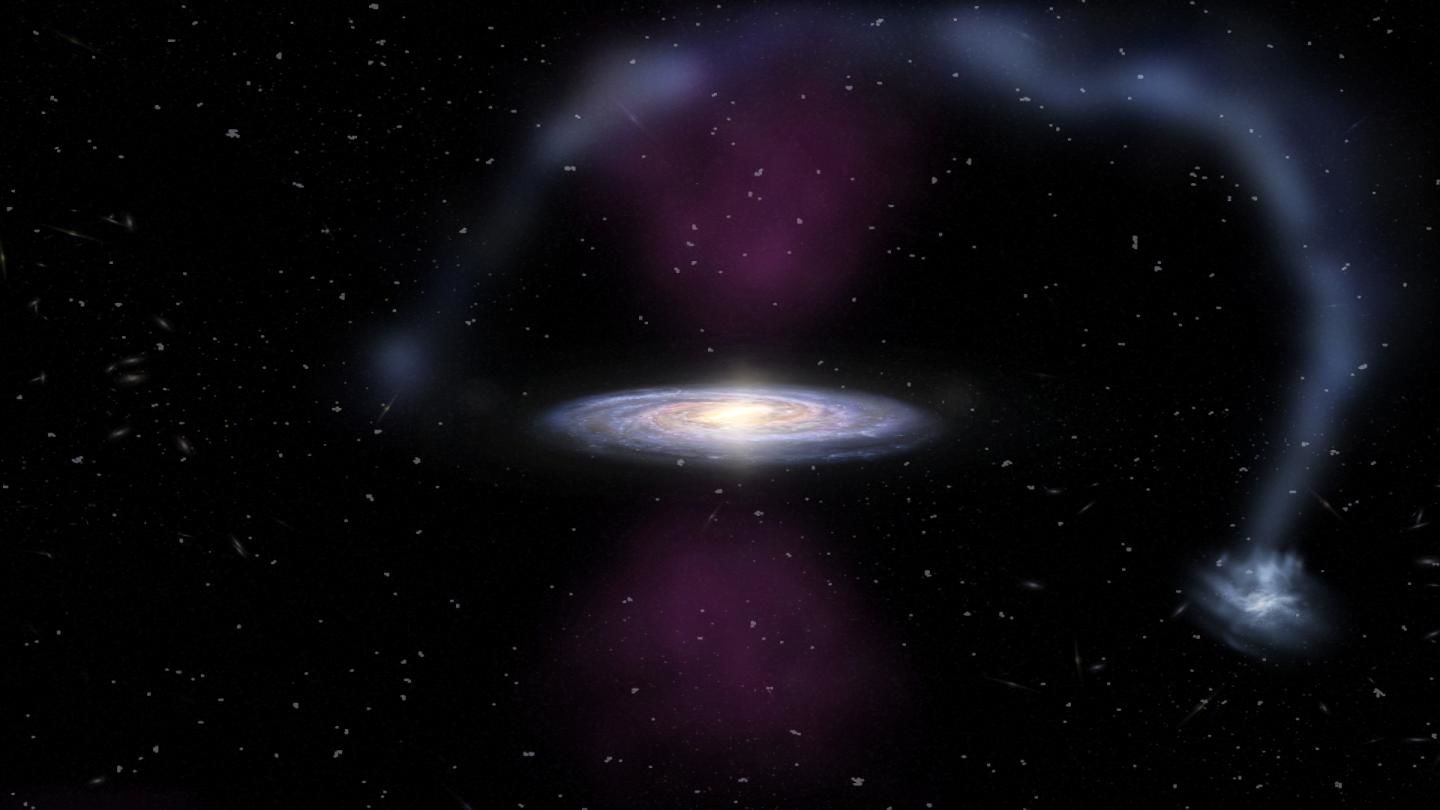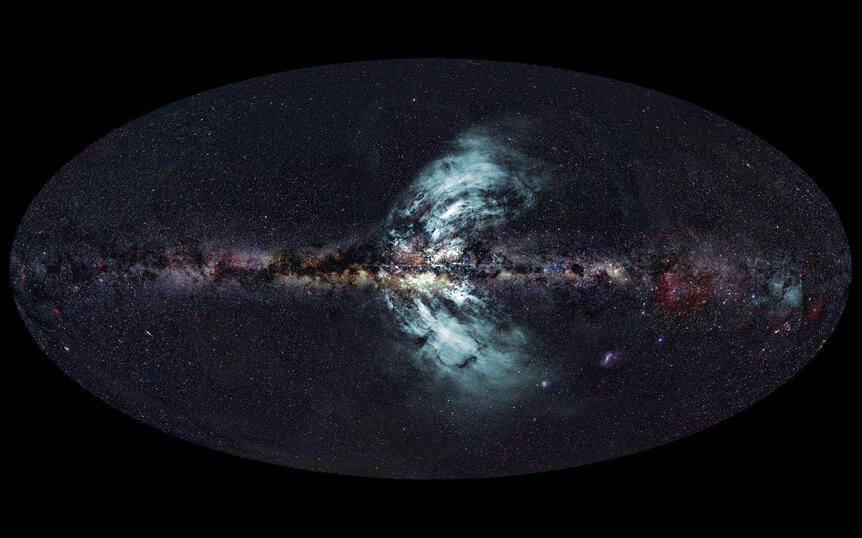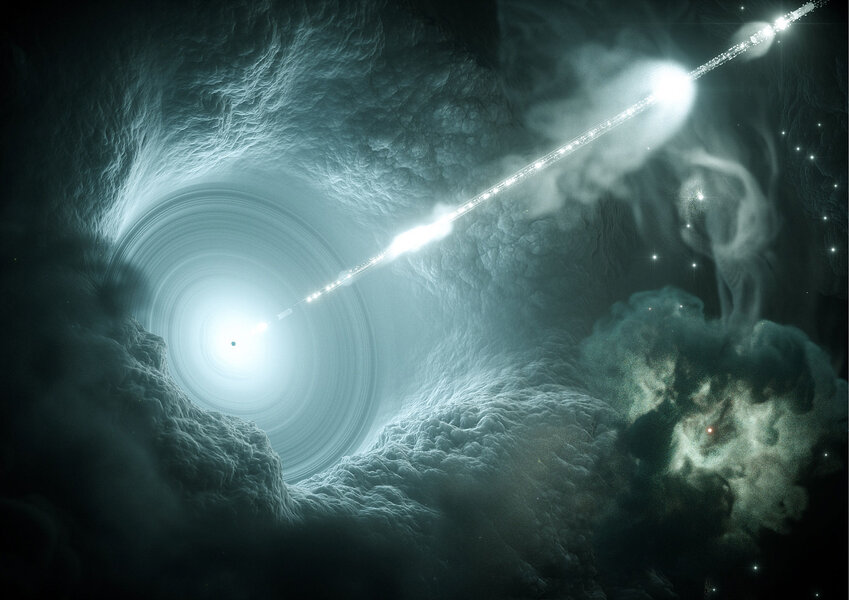Create a free profile to get unlimited access to exclusive videos, sweepstakes, and more!
The day our galaxy exploded

About three and a half million years ago, the center of our galaxy exploded.
This is no exaggeration, no attempt to overstate for effect. There's no need. The event was colossal. The explosive power coming from the core of the Milky Way easily, vastly outshone all the stars in the galaxy combined, sending two huge beams of super-high energy marching out into space in opposite directions. The scale of this event is nearly incomprehensible, and it lasted for 300,000 years.
For this time, our galaxy was a quasar, one of the most luminous objects in the Universe.
This occurrence of this event has been suspected for years, but new evidence makes the case far more compelling.
The two obvious questions are: Why did this happen, and how do we know?
[Note: I know events like this can scare some people — the psychological term is cosmophobia, a fear of things that happen in space. It's a very real mental state, and I get nervous emails from a few folks when I write on topics like these. Let me assure you, this event cannot hurt us here on Earth, for reasons I'll make clear below. Even if it were to happen again (unlikely for millions of years) we're safe. I hope that helps.]
Let's take the latter one first. What evidence do we have that this happened?
In 2003, observations using the X-ray satellite ROSAT found a lot of high-energy emission coming from the area of the sky surrounding the center of the Milky Way galaxy. It was seen at other wavelengths of light as well, and then in 2010 observations from the gamma-ray satellite Fermi were used to make an image of the super-high-energy light coming from the sky, and mapped out two huge lobes of emission centered smack dab on the galactic center.
Arguments went back and forth on what could be causing these huge bubbles of energy. I even wrote about them when it looked like the culprit was incredibly vigorous star formation, with the most massive stars blasting out energy being the engines behind the expansion. But over the years more evidence has come in, and it looks like this cannot be the explanation; the energy emitted by stars is too weak by a factor of 100 – 400 to power the events seen.
Moreover (and this is what the new research shows), there is a stream of gas circling outside the Milky Way at a distance of roughly 200,000 light years. This is called the Magellanic Stream and it stretches across over half the sky! The gas comes from two small satellite galaxies to the Milky Way called the Small and Large Magellanic Clouds called the SMC and LMC for short). These two galaxies are interacting with each other gravitationally, with the bigger one pulling gas out of the smaller one, and that gas gets left behind like a contrail as they move through space. The stream isn't terribly dense, but it's very long and quite massive, with a mass of something like 2 billion times that of the Sun.
It glows very faintly; the hydrogen in it emits a kind of light called H-alpha (which is in the red part of the spectrum, and is responsible for making nebulae glow so gloriously red). There are three hot spots, though, where the gas glows more brightly. One is centered on the LMC, which isn't too surprising, but the other two are far off in space from either galaxy. It turns out, though, that these spots are right over the north and south poles of our galaxy. Literally, straight up and down from the center of the Milky Way, perpendicular to its flat disk.
These spots are where the light from the event that occurred lit up the gas in the stream. From the amount of energy emitted, it looks like it was struck by the beam of light about 3.5 million years ago.
Remember, this gas is 200,000 light years away! That's an incredible distance. What sort of event could possibly emit that kind of energy? What could power it?
There's now only one main suspect: Sgr A* (literally, "Sagittarius A star"), the supermassive black hole lying right at the heart of the Milky Way.
This black hole is huge, with over 4 million times the mass of the Sun. It grew as the Milky Way itself formed, and the two are inexorably linked in many ways. When our galaxy was young, gas was far more abundant, and material would fall into the grip of the black hole. As it did it piled up in a disk around it, called an accretion disk. Matter close to the black hole whipped around it at nearly the speed of light, while material farther out moved more slowly. This generated incredible amounts of friction, heating the disk up to millions of degrees. It blasted out energy, ironically making it one of the brightest objects in the Universe even though it was powered by the darkest. The energy escaped in beams like those of a lighthouse, emitted perpendicular to the accretion disk, up and down out of the galaxy.
We call objects like these active galaxies. They were common when the Universe was young, though far more rare now.
But… our black hole isn't feeding now. It's not glowing, so it's called quiescent. If that's the case, how could it have erupted 3.5 million years ago?
A key piece of evidence is the existence of a ring of very young stars orbiting very close to Sgr A*. These stars are only 4–6 million old, and orbit just a little over 3 light years from the beast (for comparison, the nearest star system to the Sun is Alpha Centauri, which is over 4 light years away). Stars like this form from huge gas clouds, so the stars being there at all strongly implies there was a lot of gas there as well. At that distance, gas clouds could easily be torn apart by the black hole's gravity and dropped down into its waiting maw. This would form an accretion disk, and that was what could have powered the huge explosion. The amount of gas wasn't nearly as much as when the galaxy was young, so it was a temporary rekindling of our galactic quasar; the event lasted only 300,000 years, not millions or even billions as it did when the galaxy was young.
The energy from this event is what pumped up the gas bubbles seen by ROSAT and Fermi and so many other observatories, and the flash of light is what lit up the Magellanic Stream in two spots, the gas directly in the path of those beams of energy.
While the picture is not yet complete, the new research makes a pretty good case that this is what happened.
There is also a third question to add to the previous two: Will this happen again? Well, yes. It almost certainly will. The good news there is that the time between these events is very long on human scales, millions of years. On average, a given galaxy will undergo an event like this every ten million years or so*. That's not a schedule, it's not clockwork. It might happen sooner, or later. Either way it's likely millions of years between events, so we're OK there. From what we can tell there's nowhere near enough gas close to the galactic center to start something like this up again.
Also, these beams aren't pointed anywhere near us, so we're almost certainly going to be unaffected by them. And even if they were pointed into the galactic disk instead of up and out away from it, there's a huge amount of material between us and the galactic center, 26,000 light years away. We're safe.
After all, this last event was 3 million years ago, yet here we are. There's no evidence at all our planet was affected by this in the slightest.
I personally find all this fascinating. Disparate observations by vastly different observatories all find different aspects of this event, and astronomers have had to piece the evidence together to figure out what's going on. Now we have a coherent picture of it, a singular and ridiculously powerful event that occurred long ago, and may yet occur again. And all of this tells us so much about the history of our galaxy, the different parts that make it up, and even material that lies far outside our galaxy as a trail of stardust in the sky.
*Much, much smaller events happen all the time, but they're very faint.
















